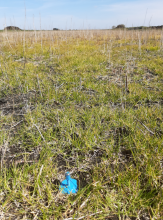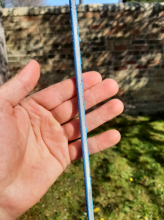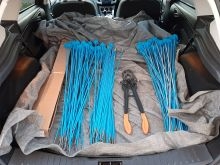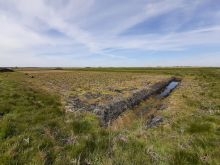Over the last couple of weeks, a new set of monitoring equipment has been installed at the Water Works project site in East Anglia, by our Eyes on the Bog Champion, Jack Clough of the University of East London.
The site is the newest edition to the Eyes on the Bog (EOTB) monitoring initiative. The Eyes on the Bog method is designed to provide a low tech, scientifically robust and repeatable approach to long-term peatland monitoring. Jack takes us through the process of setting up an EOTB site:
Making use of lockdown, and time spent at home, I have been constructing all the necessary monitoring equipment. This mostly involves assembling a curious array of blue markers.
Firstly, there are Surface level markers. These act as miniature Holme fen posts, and provide a fixed reference point to assess peat depth from in future. At the Water Works site the peat is around 3m deep, so lots of extension rods were needed too. Once assembled the Surface Level Markers were painted bright blue using Noxyde paint. Noxyde Blue is a chemically inert, rust proof paint that will extend the lifetime of the Surface level markers, ensuring that they can be used for years to come. Measurements will be taken at a frequency of 6 – 12 months to monitor the surface level change across the Water Works site.





